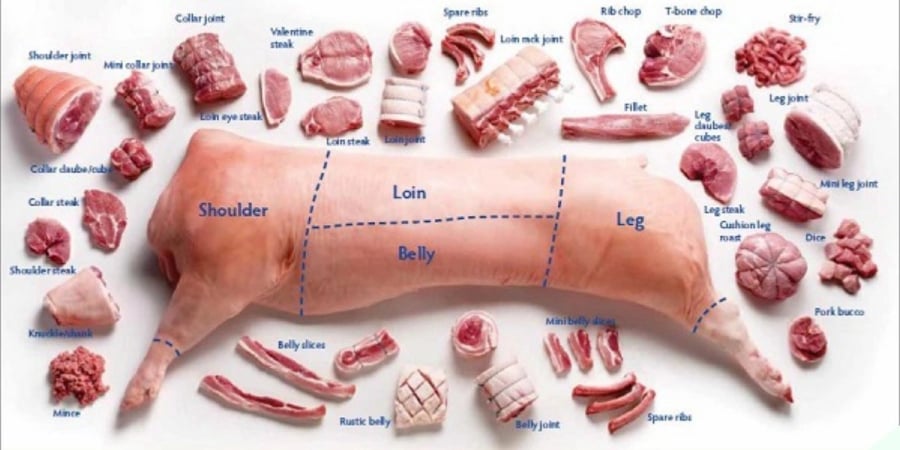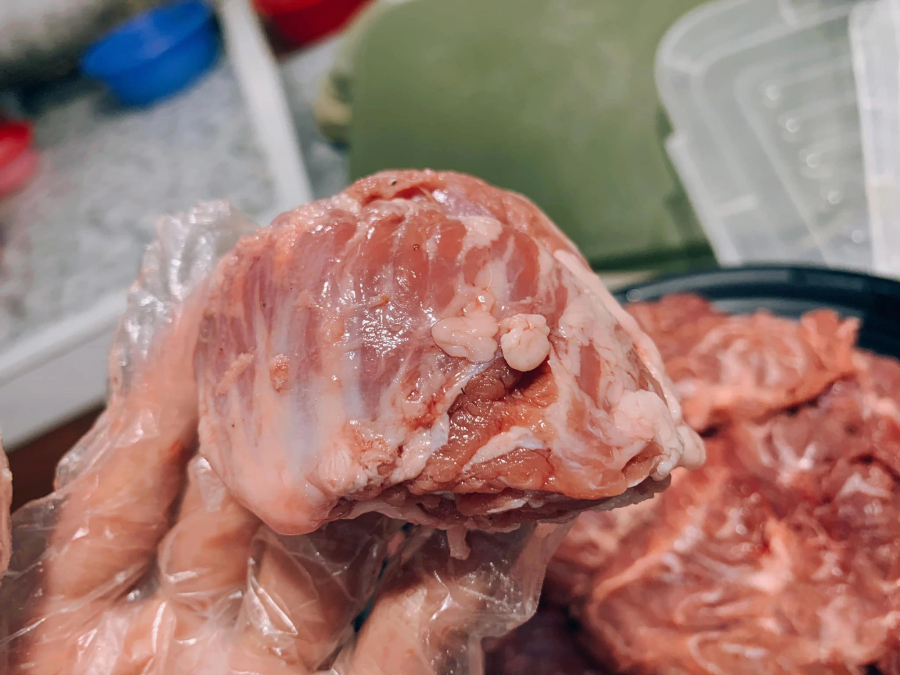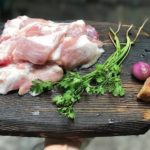When it comes to pork, most people tend to gravitate towards the more popular cuts like bacon, pork belly, or tenderloin. While ribs have their fair share of fans, there is an extremely rare and delectable part of the pig that weighs only about 200g – the pork cheek, or as some call it, the “peach blossom meat.”

Pork cheeks are extremely delicious and tend to sell out quickly, making them hard to come by.
Unlike the fatty pork jowl, pork cheeks have a layer of soft connective tissue and fat marbled throughout the meat. The connective tissue in pork cheeks is made up of thin, tender fibers, making it melt-in-your-mouth delicious. Here are some tips to keep in mind when purchasing pork cheeks:
-
Due to their rarity, you may need to arrive at the market early or even pre-order from your butcher to get your hands on some pork cheeks.
-
When selecting pork cheeks, look for a dry surface with no signs of moisture. Moisture could indicate that the meat has been pumped with water or previously frozen.
-
The meat should have a bright, pinkish-red color with no signs of darkening or bruising.
-
The pork should not have any strange odors, and it should be firm and springy to the touch.
When cooking pork cheeks, there are various methods you can choose from, but steaming or boiling tends to preserve the natural sweetness of the meat better. Here’s a simple and delicious braised pork cheek recipe to try:
Ingredients:
- 500g pork cheeks
- 1 clove garlic
- 1 onion
- Brown sugar, cinnamon, vinegar, cornstarch, star anise, peppercorns, rice wine, soy sauce

Fresh and nutritious pork cheeks
- Rinse the pork cheeks and soak them in a brine solution to remove any gaminess. Then, cut the meat into bite-sized pieces.
- Peel and rinse the garlic and onion, and cut them into wedges.
- Blanch the pork cheeks in boiling water for 3-4 minutes.
- Place the blanched pork cheeks in a pot and add the onion, cinnamon, star anise, garlic, and peppercorns. Pour in enough water to cover the meat and bring it to a boil.
- Once boiling, reduce the heat and add the vinegar and rice wine. Continue simmering for 7-8 minutes before removing the cinnamon and star anise. Season with sugar and soy sauce, and simmer for an additional 15 minutes.
- When the meat is tender and the sauce has reduced, mix cornstarch with water and stir it into the pot to thicken the sauce.
This dish will yield tender pork cheeks in a savory sauce, perfect to be enjoyed with rice or bread.



































